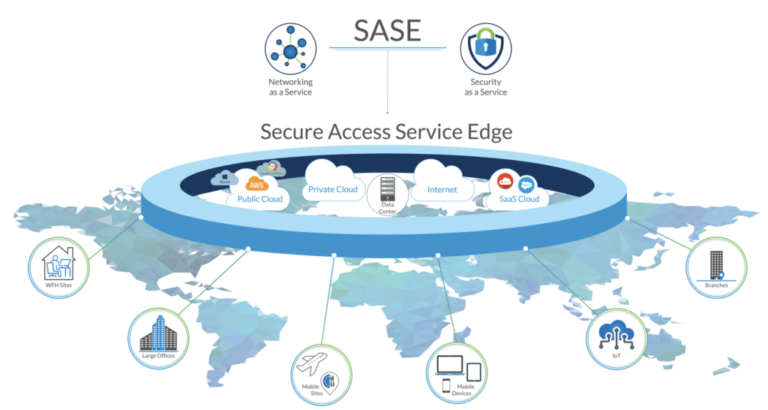
Neil Danilowicz, Principal Architect at Versa Networks and Daniel Bar-Lev, VP Strategic Programs at MEF, discussed the emergence of SASE managed services and the core requirements at a recent SASE Conference.
Gartner defined Secure Access Service Edge (SASE) in 2019 as the perfect union between networking and security services – a tightly woven conglomeration of multiple networking and security functions provided by various vendors in the market. While SASE addresses the modern-day challenges of digital transformation or supporting a Work-from-Anywhere workforce, it also leads to its own set of complexities in deployment, administration, and management. How does an enterprise fit all these networking and security capabilities seamlessly and efficiently on their own when they have their own staff, time, and budget constraints?
Not All Organizations Are Built The Same
Advanced initiatives can sometimes require large IT departments to research, design, build, and deploy. Not every enterprise has the resources and specialized staff to do this in a cost and time-efficient manner. Some enterprises want something that works right out of the box. Additionally, organizations cannot afford reduced connectivity and performance speeds as they introduce new services into their environment.
MSPs Can Accelerate Acceptance and Implementation of SASE
MSPs (Managed Service Providers) can be very helpful in improving SASE deployment scalability when enterprises do not want or cannot implement SASE by themselves. MSPs can offer a true a-la-carte method where an enterprise can pick security and networking vendors of their choice or offer a fixed model where the MSP has already chosen the best options out there on the market and provided it in package.
Choosing to deploy SASE with the help from an MSP comes with other advantages including: streamlining the entire process, decreasing risks, and establishing success. MSPs have the tools and processes to integrate various services into a simple delivery model such as help desks, troubleshooting, analytics, provisioning, billing, and more. As a result, enterprises don’t have to be responsible for creating or reorganizing these services on their own reducing total costs and time spent.
Additionally, MSPs are armed with large teams of IT and security professionals. These professionals are skilled in operating networks at peak performance and efficiency, are knowledgeable about new technologies, understand regulatory and compliance measures, and have repeatable processes to support from start to finish in all aspects of implementing SASE. The top MSPs work closely with an enterprise’s IT department and become an extension of the team – lending advice and support whenever needed. Collaboration between the enterprise and the MSP is necessary to help develop the right solutions and policies to achieve organizational goals.
In a nutshell: MSPs can do all of the design and management of SASE services and they know which vendors work well with others to deliver optimal results. This means that as the adoption of SASE services continues to pick up speed, many enterprises will consider outsourcing their SASE requirements to MSPs which will help to create the emerging SASE Managed Service market.
Understanding the Core Requirements of SASE
SASE can be conceptualized into three dimensions: security, connectivity, and policy. For security, a complete set of security functions are ideally performed at the closest point of the resource and the user requiring access. Connectivity to the service edge is just as important as the connectivity within the service. In order to offer optimal connectivity, SD-WAN is the best solution available that leverages application flow and traffic forwarding based on an enterprise’s policies. Secure SD-WAN allows organizations to have the most optimal performance for a given application and a given set of actors (a user, laptop, cloud instance, container, etc.). Lastly, policy enforcement ensures that an asset is being accessed by an authorized and validated actor. An enterprise determines the security function required and where it gets instantiated for a given application flow. These three dimensions of SASE are critical to ensuring that networking and security services are running seamlessly and efficiently.
Whether you’re starting to plan for SASE or have already begun your SASE research, you can connect with Versa’s trusted MSPs and partners to help you on your SASE journey.
About Versa
Versa SASE, the leader in SASE, is available on-premises, hosted through Versa-powered Service Providers, cloud-delivered, and via the simplified Versa Titan cloud service designed for Lean IT.

